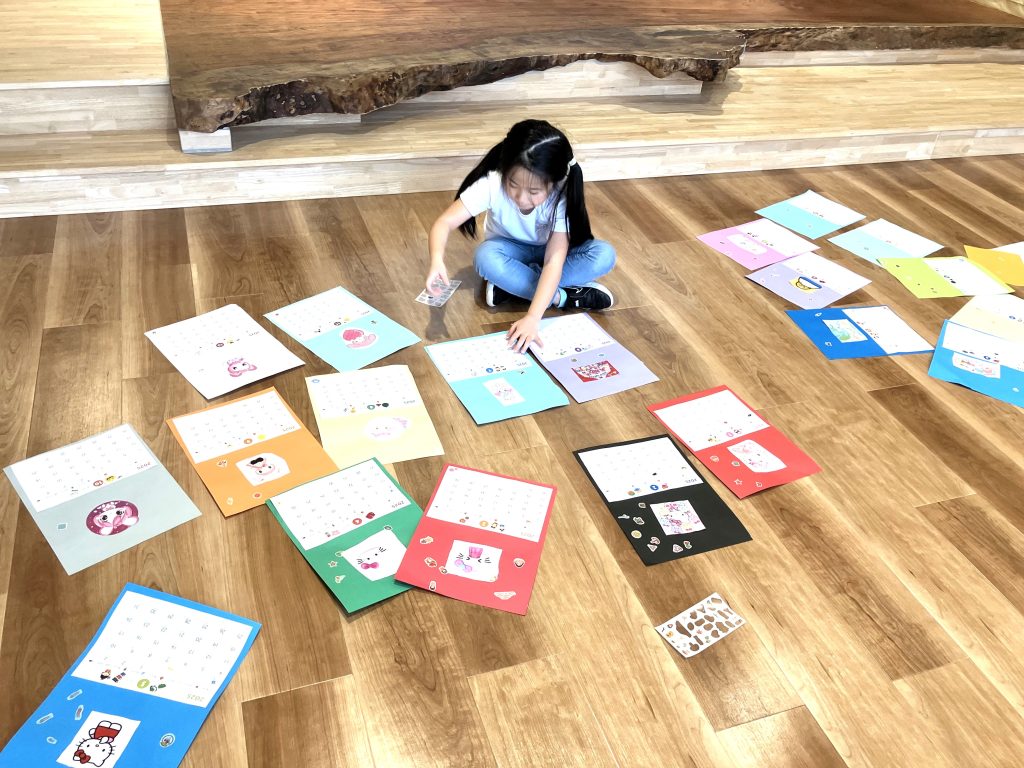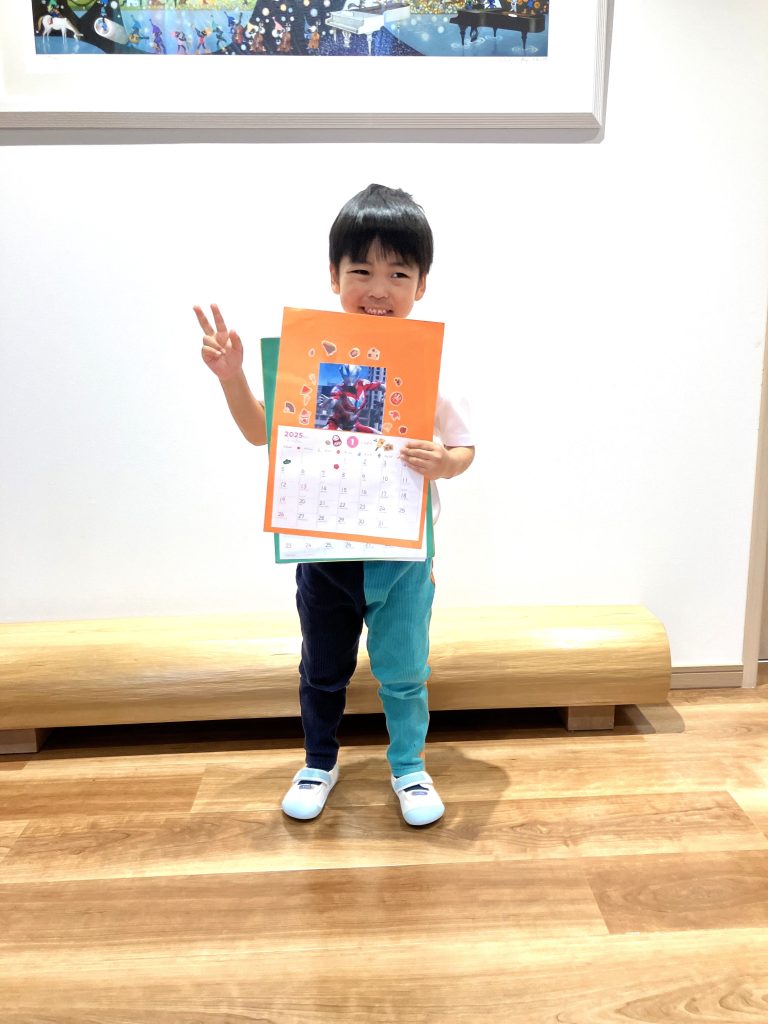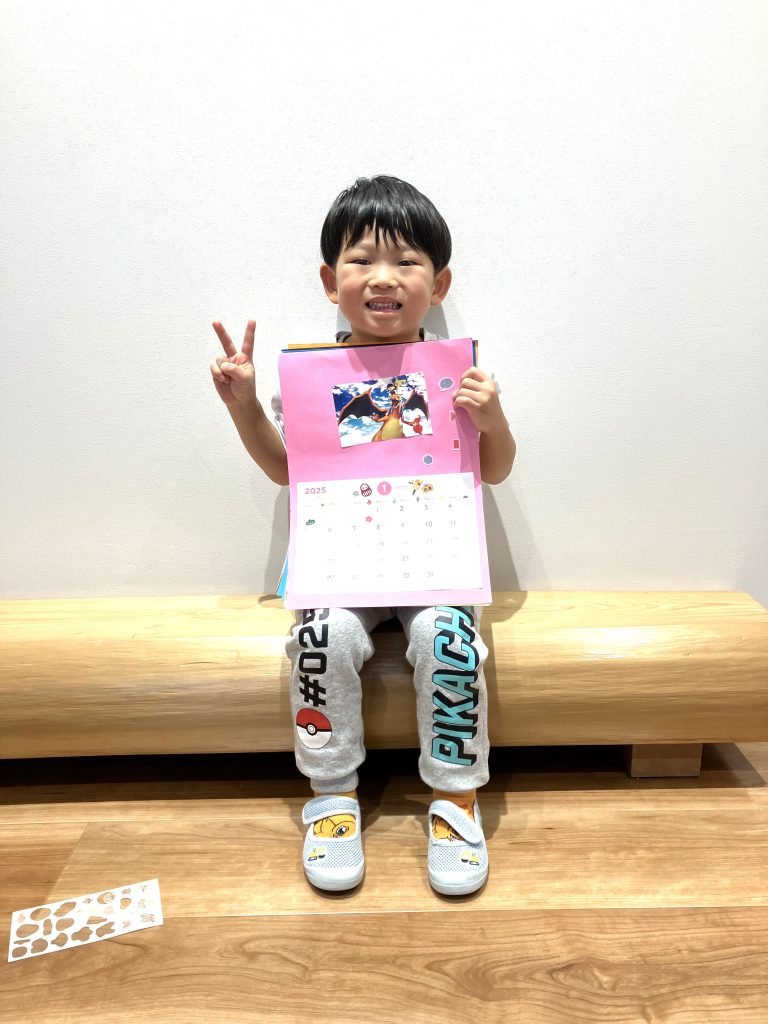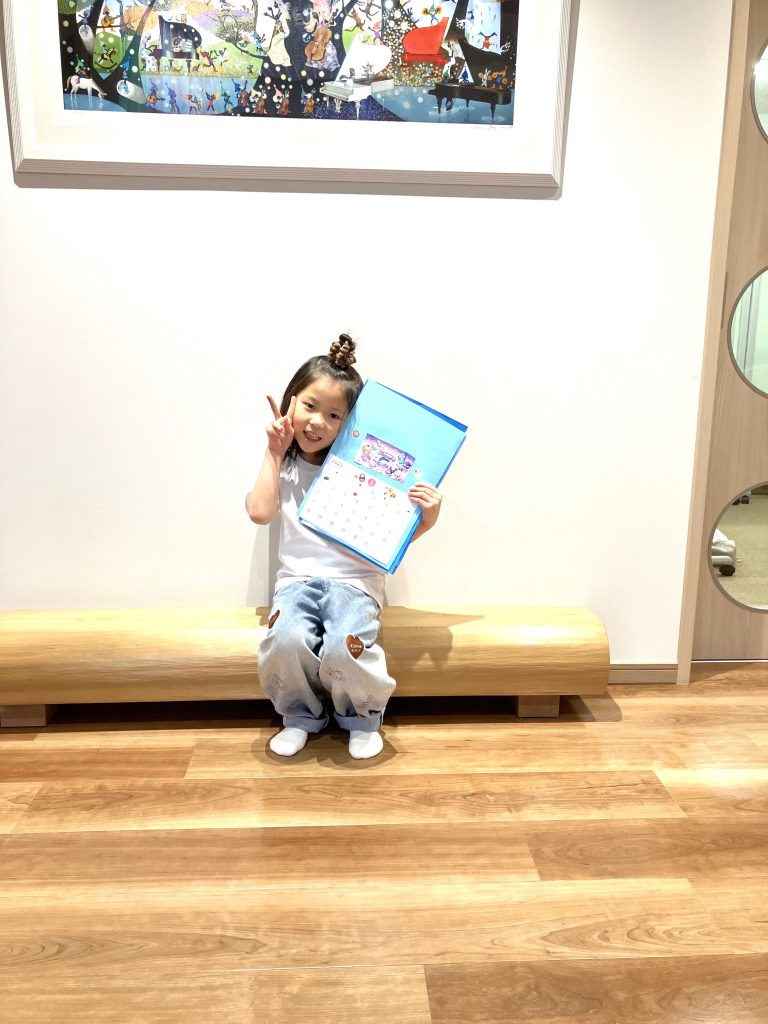This is the last Japanese lesson of the year—“Calendar Project Part 2.” Today, we’re definitely going to finish it! ( `ー´)ノ
Teacher: “Let’s work hard and finish it today~ (; ・`д・´)!” (I’m really feeling the pressure inside.)
Kids: “Yay!” (*”▽”)✨✨✨ (As cheerful as ever!)
Since the usual room is a bit small, today, everyone gathered in the hall. Last week, we pasted the monthly calendars onto the backing paper.
This time, everyone will stick their favorite character’s pictures or photos on each month. After adding the character, we’ll decorate the space around it with stickers representing the seasons of Japan.
Everyone’s expressions are serious and focused (◎_◎;)💦💦💦




Including the cover, each person worked on 13 pages, and a total of 52 calendar pages filled the hall.
Choosing characters and stickers, checking on friends’ progress, and helping out. The construction paper is gradually turning into actual calendars! ٩( ”ω” )و✨✨✨




Actually, it’s still incomplete ( ノД`)シクシク…💧 We didn’t quite reach the cover, but we managed to finish up to December. The expressions on everyone’s faces showed a sense of accomplishment, though they also seemed eager to continue working (they love crafts so much…).
Winter school starts next week. After lessons, we’ll gather and finish it up before the winter holidays! (`・ω・´)ゞ
💡Origin of the Calendar
Calendars were created to manage daily time and track the changing seasons based on the movements of the sun and moon. The origin of the calendar dates back to ancient times, with the oldest known calendar being the ancient Egyptian calendar. In Japan, the lunar calendar brought from China during the Nara period formed the basis, and it was later refined. The Japanese word for “calendar” is believed to come from the term “日読み” (kayomi) in the Edo period, as defined by Tanigawa Shisei in his “Wakun Shin.”
Click here for more information about our school
🌹Rainbow Rose International School🌹

